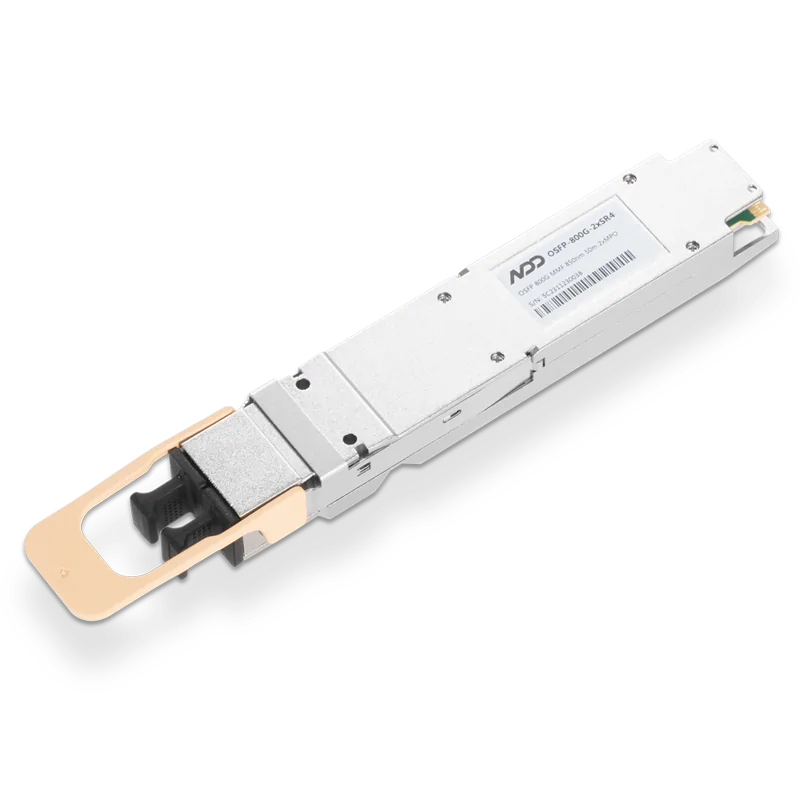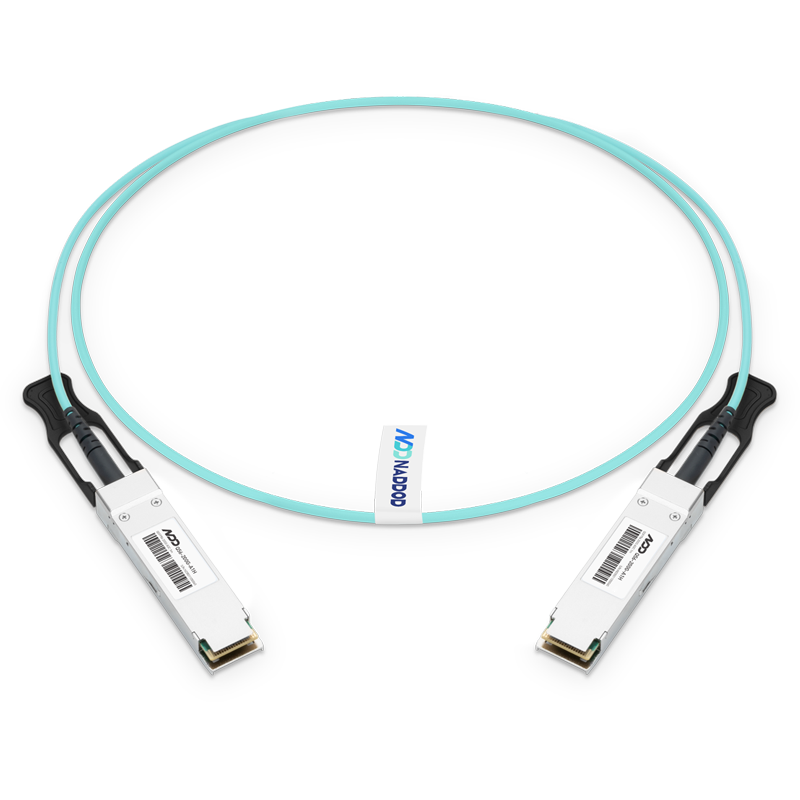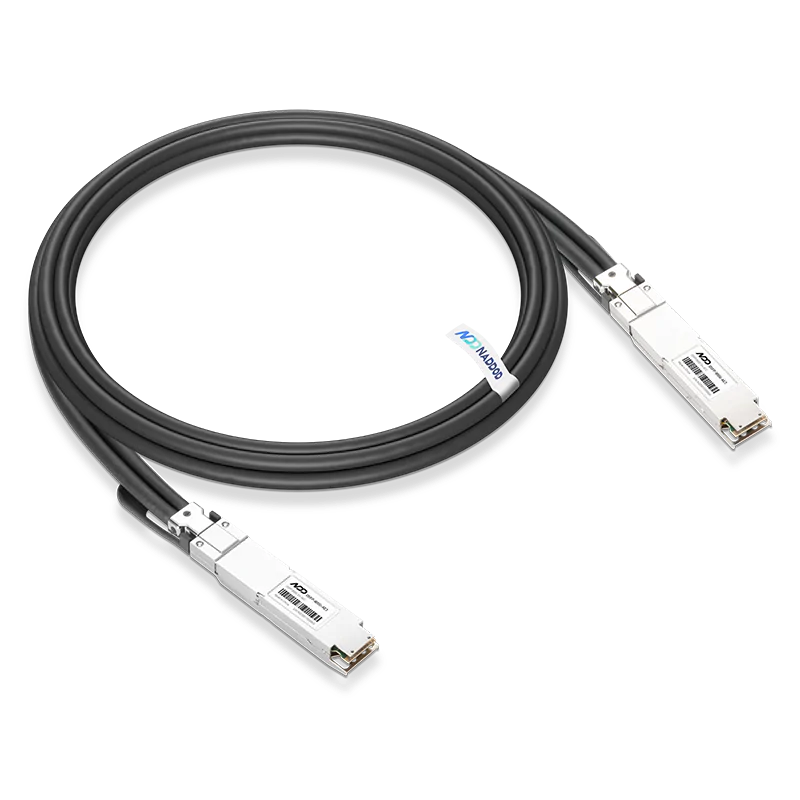Opportunities and Applications of Silicon Photonics Integration in High-Speed Optical Modules
Optical modules have a wide range of applications, with access network optical modules accounting for less than 15% of the market, including PON modules for wired access and 5G fronthaul modules for wireless base stations. While silicon photonics integration is used in these scenarios, traditional low-cost, mature material technologies are still predominantly chosen.
Two major sectors dominate the optical module market: data centers, particularly those evolving to meet the high-speed requirements of AI networking, and Wavelength Division Multiplexing (WDM) scenarios, including both direct-detection (DD) and coherent optical modules. Together, these two sectors account for over 85% of the total market and are the primary application areas for silicon photonics integration.
![]()
The Role of VCSEL and EML in AI Networking
In AI-driven computing networks, multimode optical modules are currently dominated by VCSEL solutions. VCSELs are favored for their lower cost, simpler packaging processes, and lower power consumption, which are critical advantages for optical modules in AI networking.
For single-mode optical modules, the competition mainly lies between EML (Electro-Absorption Modulated Laser) and silicon photonics technologies. EML offers the advantages of high technical maturity and an established supply chain, with many companies involved in every stage from chip production to packaging and module assembly. Silicon photonics, on the other hand, allows for the integration of lasers, detectors, modulators, and CWDM/FR multiplexing functions, though its drawback lies in the fact that none of these individual functions currently offer the best performance compared to their traditional counterparts. Moreover, the supply chain for silicon photonics is still being optimized.
Technical Breakdown of Silicon Photonics Solutions
When further dissecting silicon photonics solutions, the transmitter side (Tx) offers two major technical paths: Mach-Zehnder (MZ) and micro-ring modulators. MZ modulators are more technically mature and less sensitive to wavelength variations, while micro-ring modulators offer lower power consumption.
In the realm of AI networking, where low power consumption is critical, MZ structures have the advantage in short-range applications due to their superior performance and feasibility. Micro-ring modulators, with their low power consumption, small size, and high integration, hold a long-term advantage but currently face challenges in achieving production consistency and wavelength sensitivity control.
Recently, there have been developments in hybrid structures combining micro-ring modulators with MZ structures, offering the performance advantages of MZ with the power efficiency of micro-rings. This marks a shift from competition to collaboration between these technologies.
Silicon can also be used for detectors, integrating the receiving end through pure silicon or silicon-germanium technologies. While silicon can produce lasers, it cannot independently generate the lasers required for optical communications, necessitating hybrid integration. Some manufacturers, such as InnoLight and HiSilicon, choose silicon photonics solutions that do not include lasers, while others, like Intel, opt for hybrid integrated laser solutions.
Coherent Optical Modules and Silicon Photonics
Silicon photonics plays a crucial role in coherent optical modules, which require components like IQ modulators, Integrated Coherent Receivers (ICR), and narrow-linewidth tunable lasers. In the domain of IQ modulators, silicon photonics competes with InP and TFLN technologies.
From an optical performance perspective, TFLN thin-film lithium niobate > InP indium phosphide > SiPh silicon photonics. However, in terms of electrical performance, SiPh silicon photonics > InP indium phosphide > TFLN thin-film lithium niobate. In terms of technological maturity, InP indium phosphide > SiPh silicon photonics > TFLN thin-film lithium niobate. This creates a complex competitive landscape where each material has its strengths and weaknesses, leading to a delicate balance of competition and collaboration.
Advantages of Silicon in Polarization Control and RF Bandwidth
Silicon has a unique optical property that sets it apart from InP and TFLN: its ability to handle polarization with ease and at a lower cost. While InP and TFLN can achieve polarization control, the process is more complex and requires significant chip area, which increases costs. This has led to the development of hybrid integration solutions combining silicon with InP and TFLN technologies.
Silicon's ability to handle large RF bandwidths also gives it an edge in high-frequency applications. The RF bandwidth advantages of silicon are becoming increasingly important as the industry moves towards higher data rates, with AI networking pushing towards 110GBd and coherent modules towards 140Bd.
Silicon Photonics in Coherent Modules
In the realm of coherent modules, silicon competes with PLC and InP solutions in ICRs. While silicon offers high integration, it faces challenges such as high optical loss, which leads to lower responsivity, and a narrow operating wavelength range in the C and L bands. To address these issues, silicon's spectral width must be expanded, often through stress-induced techniques, though excessive stress can pose reliability risks.
For narrow-linewidth tunable lasers in coherent modules, silicon competes with ECL and InP DBR lasers. Silicon's advantage lies in its ability to achieve the ultra-narrow linewidths of ECLs through integrated waveguides, though it currently suffers from high loss and underdeveloped high-power solutions. ECLs offer ultra-narrow linewidth and high power but are complex to assemble and require highly precise manufacturing processes.
The Future of Silicon Photonics in High-Speed Optical Modules
Silicon photonics offers unique advantages in polarization control and RF bandwidth handling, making it increasingly vital in the development of high-speed optical modules for AI networking and coherent communication. As the industry continues to evolve, silicon's role in integrating optical and electronic components will likely expand, driving further innovation and efficiency in optical communication technologies.
Silicon's inherent advantages in handling large RF bandwidths, combined with its potential for hybrid integration with other materials like InP and TFLN, position it as a key technology for future high-speed (1.6T/800G/400G) optical modules. While challenges remain, particularly in optical loss and power handling, ongoing research and development efforts are poised to overcome these hurdles, solidifying silicon photonics as a cornerstone of next-generation optical communications.

At the forefront of optical communication, NADDOD offers high-speed optical modules, including silicon photonic modules and coherent modules, crafted to meet the evolving needs of advanced data centers, AI networks, and high-performance computing environments. Our diverse product lineup delivers reliable, high-performance solutions, each rigorously tested to maintain low BER. With a well-stocked inventory, we ensure rapid delivery, keeping your network infrastructure resilient and future-ready. Reach out to us for tailored solutions that perfectly align with your network requirements.

 800GBASE-2xSR4 OSFP PAM4 850nm 50m MMF Module
800GBASE-2xSR4 OSFP PAM4 850nm 50m MMF Module- 1High-Speed Coherent Modules: DCO and ACO
- 2Development Trends in Optical Module Technology: SiPh, Coherent, LPO, LRO, and CPO
- 3Finned-top and Flat-top Design in 400G/800G Optical Transceivers
- 4Vera Rubin Superchip - Transformative Force in Accelerated AI Compute
- 5NVIDIA GB300 Deep Dive: Performance Breakthroughs vs GB200, Liquid Cooling Innovations, and Copper Interconnect Advancements.


































